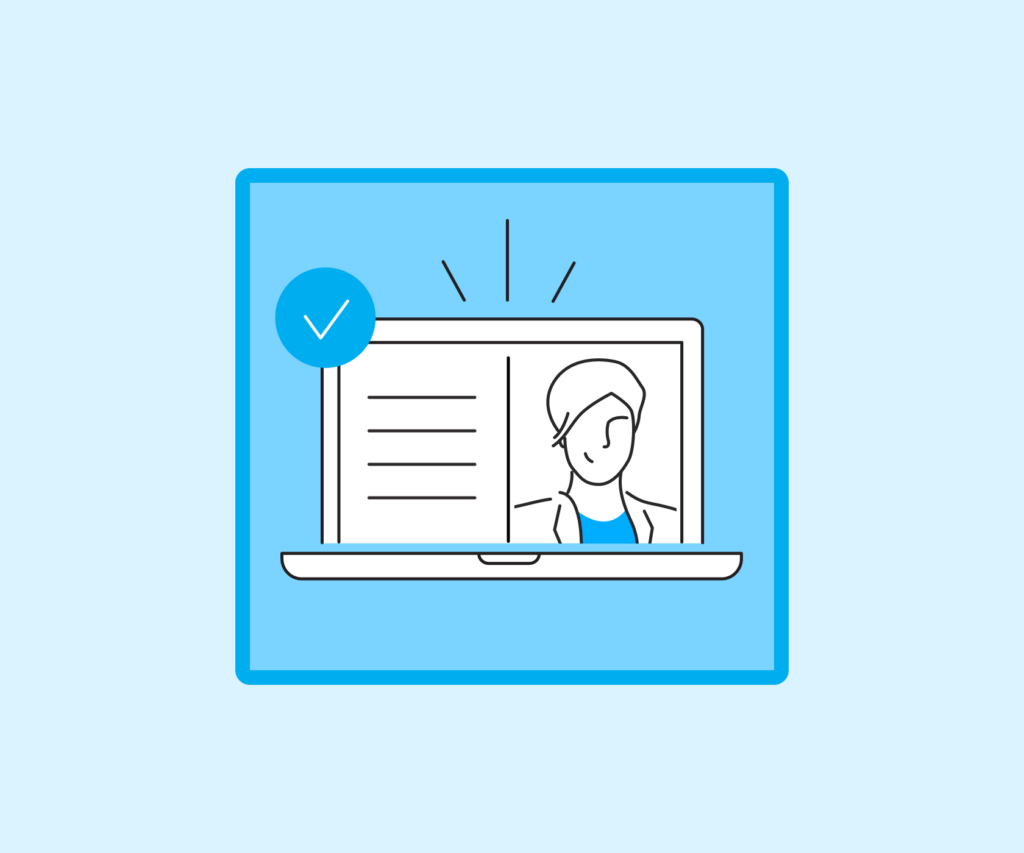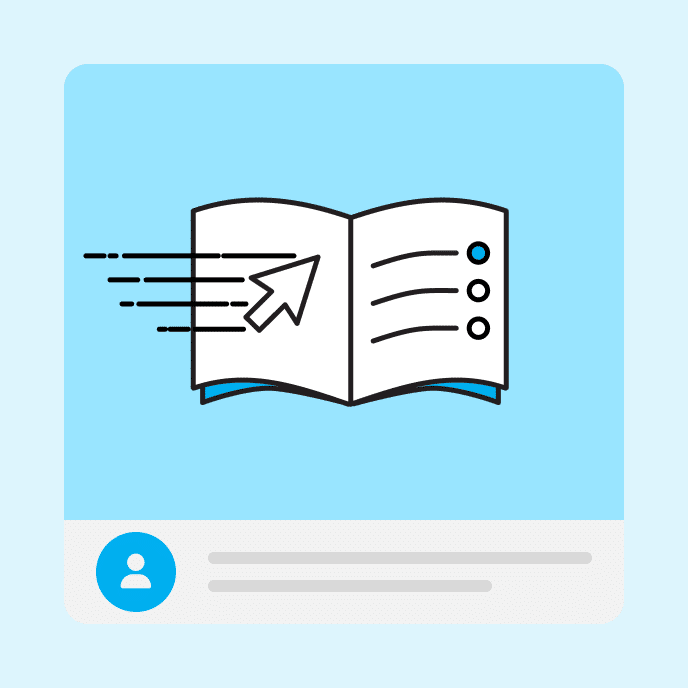What Is Onboarding?
Learn how a successful onboarding program can boost productivity, employee retention, and more.

Introduction to onboarding
Employee onboarding is the process of integrating a new hire into an organization. Effective onboarding equips employees with the tools, resources, and knowledge they need to succeed in their roles and become meaningful contributors to the organization.
Onboarding typically consists of several phases that help new employees understand the company’s culture, structure, and expectations while enabling organizations to maximize the value of their most important asset: their people.
While some organizations may view the onboarding process as a routine formality, organizations that recognize onboarding as a strategic resource can leverage it to support employee productivity, satisfaction, and retention.
In this guide, we’ll discuss the importance of employee onboarding, including the main phases of the process and best practices to help shorten the path to productivity for new hires.
Basics of onboarding
Starting a new role is an exciting opportunity, though it comes with some uncertainties—new faces, unfamiliar environments, and different systems and technologies to learn. A well-structured onboarding program can help overcome these challenges by providing new hires with proper training, education, and support even before day one.
Effective onboarding begins the moment an employee accepts the job offer and lasts until they’re fully engaged and contributing to the team. A robust program covers the basics like essential paperwork and company policies while also emphasizing relationship building, goal setting, and providing hands-on job training to ensure new hires feel welcome and connected to the new workplace.
Onboarding should help employees become acclimated to their new environment and familiarized with their roles, responsibilities, and technologies. Each company should tailor the onboarding process to align with organizational goals and the unique needs of new employees, ensuring a smooth transition for productivity and growth.

Benefits of effective onboarding programs
An effective onboarding program provides notable advantages for both new employees and the hiring organization. Let’s dive into those benefits in more detail.
Improved employee retention
According to Zippia, employees who complete a structured orientation process are 69% more likely to stay with the company for at least three years. Onboarding can help new hires feel supported and well-prepared for their new role, encouraging better engagement and loyalty to the organization.
When done properly, the onboarding process can improve employee satisfaction and retention, maximizing the ROI of recruiting activities. Hiring and training can be expensive, so minimizing employee turnover through effective onboarding should be a key focus for organizations looking to improve their bottom line.
Faster time-to-productivity
Effective onboarding equips new hires with the necessary skills and knowledge to contribute to the organization more quickly. A streamlined process reduces the learning curve, making employees feel self-sufficient and more comfortable working independently.
While employees may take a few months to ramp up to full productivity, a solid onboarding process can shorten this ramp-up period.
Stronger organizational culture
An effective onboarding program allows companies to demonstrate their culture and values. It doesn’t just present the company policies and values to new hires. It also helps employees build meaningful connections with their peers, clients, and managers, allowing them to embrace the organization’s mission.
Onboarding should engage employees even before their first day on the job, making them feel valued as team members and more committed to the organization. An effective program shows employees that the company is invested in their success, fostering a positive perception of its culture.

How to build an onboarding program strategy
Developing an effective onboarding program is an iterative process that requires the proper tools, collaboration, and resources to encourage employee engagement and productivity.
Below, we’ll cover some useful tips to get started.
Set clear objectives
Start by defining the main learning objectives for employee onboarding. What do you expect new hires to achieve from the program? What new skills or knowledge should they gain? How quickly do you expect them to achieve these targets? These objectives will serve as the foundation for onboarding course creation, helping you develop training materials that serve these high-level training goals.
Establishing your goals for the onboarding process can help you create a logical flow and structure for the program. In turn, employees can absorb the necessary information without becoming overwhelmed.
Consult key stakeholders
Creating an effective onboarding program should be a collaborative effort. Certain teams or individuals might be primarily responsible for course creation. However, consulting with key stakeholders like HR professionals, management, and current employees can ensure onboarding materials are relevant, complete, and accurate.

Choose the right tools
Leveraging course creation and distribution tools and software can simplify the development and delivery of onboarding programs. Ultimately, this leads to better outcomes for both employees and employers.
E-learning tools like Storyline and Rise within the Articulate 360 platform help learners and creators overcome common onboarding challenges. Their intuitive interfaces, pre-built onboarding course templates, and integrated AI tools allow developers to quickly create interactive and informative onboarding programs that prepare learners and make them feel engaged in the training process without overwhelming them.
Onboarding courses can be conveniently deployed to employees on their chosen devices via course distribution tools and learning management systems (LMS) like Reach. Choosing the right tools can lead to better employee productivity, shorter training time, and more proficient skill development.
Customize onboarding for different roles
While certain aspects of onboarding—such as reviewing the organization’s mission and values, company policies, and employment paperwork—apply universally to all employees, other components should be tailored to meet the specific requirements of each role.ections to include in your course.

Role-specific onboarding typically includes the hands-on training necessary for new hires to succeed and become productive team members. For example, a new marketing specialist should be trained on the company’s customer relationship management (CRM) platform and educated on brand guidelines. In contrast, this training likely wouldn’t be relevant to an employee hired as an HR manager or software developer.
Consider leveraging e-learning branching scenarios to offer customized learning paths for different roles.
Key phases of the onboarding process
Any effective onboarding program should adhere to the “Five Cs,” which Forbes lists as:
- Compliance (employment forms and company policies)
- Clarification (explanation of roles and responsibilities)
- Culture (the company’s mission and values)
- Connection (relationship-building with management, colleagues, and other staff)
- Check-in (continued follow-ups)
Incorporating the Five Cs into the following phases will provide a strong foundation for a smooth and engaging onboarding experience.
Preboarding
An effective onboarding process doesn’t begin on the new hire’s start date. It should kick off with the preboarding phase, which begins when the candidate has accepted a job offer and ends on their first day.
Starting a new position can be nerve-wracking as employees anticipate adjusting to their new culture, team, and responsibilities. Fortunately, preboarding can bridge this gap and help the new hire feel more at ease and prepared.
Preboarding can include efforts like sending a welcome email or kit with essential information for their first day, such as where to park, how to access the building, and any paperwork they should complete beforehand.
Preboarding also gives employers a head start in preparing for the new arrival. For instance, it may serve as a reminder for the company to order more equipment or purchase additional software licenses to enable a seamless transition for the new employee.
Initial onboarding
The initial onboarding experience shapes an employee’s view of the company and can influence whether they stay long-term or make an early exit. In fact, a BambooHR survey shows that 70% of new hires decide if the job is a good fit for them within the first month, and 29% know during the first week.
Overall, the main goal of this onboarding phase is to help employees feel engaged in the company’s values and mission from day one, allowing them to see how their role contributes to the organization’s success. Initial onboarding steps may include a tour of the facility, team introductions, setting up accounts and devices with IT, and completing any remaining paperwork with HR.
There is a lot of information to cover during the employee’s first week on the job. It’s key for organizations to organize it in a way that is comprehensive without overwhelming new hires.
Ongoing onboarding
The onboarding process extends beyond the employee’s first few days on the job. Depending on the specific organization and position, onboarding can last anywhere from one to six months.
This is when the bulk of the employee’s job training will occur. Instruction can be delivered through various formats, such as:
- Instructor-provided training
- Self-driven e-learning courses
- Job shadowing
During this phase, employees should receive all the skills and knowledge that will help them thrive. At a certain point, they’ll transition to working independently and fully contributing to the organization.
Long-term integration
New hires should still receive some level of support even after their initial training is complete, though it will become less frequent over time. Once employees start working independently, regular check-ins with a mentor or manager can ensure their continued integration into the organization.
New hires should be able to provide feedback on the onboarding process and request any additional assistance or training they feel is necessary to succeed in their role. This helps their performance and allows employers to refine the onboarding process for future hires.
Best practices and tips for designing an onboarding program
Designing an effective onboarding program can maximize productivity, improve employee retention, and enhance job satisfaction. To get the most out of your onboarding program, consider the following best practices.
Welcome new hires warmly
Set a good first impression with a warm greeting and interactive welcome kit. Whether delivered in-person or virtually, a personalized welcome message from the employee’s new manager can help them feel appreciated and part of the team from day one.
If you’re onboarding a remote worker, core team members can record brief videos or audio clips introducing themselves and welcoming the new employee. You may also send the employee some corporate swag to showcase your company culture in a fun and informal manner.
Provide necessary resources and tools
New hire onboarding should supply employees with all the essential information and resources to set them up for success. Aside from the hands-on job training they’ll receive, this includes basic handouts like an org chart, benefits information, the employee handbook, and a contact list.
Employees should also receive detailed instructions on how to log into their workstation, email, and other software or tools they’ll need to access for a smooth transition. You may consider leveraging digital tools so employees can access clickable org charts, video testimonials from current employees, or an interactive timeline of the company’s history to enhance engagement while still sharing essential information.
Encourage open communication
Onboarding materials can often feel one-sided, primarily delivering information from the company to the new hire. However, an effective onboarding program thrives on employee engagement.
Onboarding content should encourage open communication, making the new hire feel comfortable asking questions and seeking clarification as needed to become fully up to speed in their new role.
Include relevant proper contact details for key team members throughout the onboarding training course so they know who to reach out to with questions or concerns. Additionally, schedule a follow-up meeting after completion to address any lingering issues.
Gather new hire feedback
The onboarding program can always be improved, and gathering feedback from new hires allows you to determine what they found helpful and where they desired more support.
Once employees have completed the program, send them a feedback form to get their input, asking questions like:
- How would you rate the overall onboarding experience?
- Were company policies and procedures clearly explained?
- Do you feel prepared to perform your job duties?
- Did you receive enough guidance from your manager or supervisor?
- Did you feel comfortable asking questions?
- What aspects of the onboarding process did you find most helpful?
- Do you have any suggestions for improving the onboarding process for future new hires?
Pairing these answers with performance data on training goals can help assess onboarding effectiveness and offer critical insights into areas for improvement.
Emerging trends in employee onboardingso improve retention by encouraging learners to apply their new knowledge in practical situations. Course authoring tools like Storyline and Rise within the Articulate 360 platform make it easy to integrate these interactive elements seamlessly.

Employee onboarding best practices continue to evolve as new technologies emerge, employee preferences change, and workplace dynamics shift. To keep your pulse on the latest practices for effective onboarding, keep these trends in mind.
Personalized onboarding experiences
Personalized onboarding isn’t new, but it is becoming more feasible to implement at scale thanks to modern technology. Greater personalization can make the onboarding experience feel more relevant to employees, helping boost engagement and satisfaction.
Some of the ways companies can personalize the onboarding experience include:
- Personalized welcome messages
- Role-specific training
- Custom learning paths based on the employee’s existing strengths
- Personalized feedback from team leaders
- Mentorship program for one-on-one support
AI and automation
The use of AI in onboarding is becoming increasingly popular, helping automate various aspects of the process. AI tools enable teams to spend less time on tedious onboarding tasks, like creating content variations or generating quizzes, while still delivering tailored and high-quality training.
For instance, e-learning tools like Storyline allow you to leverage AI to create custom learning paths based on an employee’s position, skills, progress, and training needs. These tools make it easier and faster for teams to personalize training for diverse groups of learners.
Remote and hybrid onboarding
Remote and hybrid work has quickly become a mainstay in today’s market, leading organizations to rethink their traditional onboarding processes.
These workplace dynamics encourage the further adoption of e-learning tools and learning management systems, which allow teams to develop and deploy engaging online onboarding courses to employees no matter where they’re located.
Even in a remote or hybrid setting, teams can incorporate interactive elements like virtual orientation sessions, mentorship programs, and videos to help new hires feel embraced by the company as they start their new job.
Measuring the effectiveness of an onboarding program
The goal of any onboarding process should be to provide new hires with the necessary tools, training, and resources to succeed. Aside from simple observations, how can you determine whether your program achieves this?
There are several metrics, key performance indicators (KPIs), and pieces of qualitative data to objectively demonstrate learner progress, including:
- Employee retention
- Time to productivity
- New hire satisfaction
- Manager feedback
Tracking your program’s effectiveness will enable you to refine and improve onboarding for future hires. Having a baseline and a basic measurement framework will help you determine if new hires are progressing as you’d like, and is easy to do with e-learning tools like Reach. Reach not only offers built-in capabilities for tracking training activity but also empowers you to distribute your onboarding and iterate on it to maximize its effectiveness.
For instance, maybe the employees who complete onboarding tasks in the office have a shorter time to productivity and higher satisfaction than those onboarding virtually. If this is the case, you might need to reassess and revamp your virtual delivery methods to keep all employees engaged regardless of location.
Why technology is crucial in effective onboarding
Companies increasingly use technology to streamline the creation and delivery of employee onboarding programs, providing a more efficient and user-friendly experience.
To support effective onboarding, consider e-learning authoring tools that allow you to streamline and speed up the course creation process. Course creation and authoring tools are specifically developed to make creation and distribution of onboarding programming easy and effective—often reducing timelines for employee onboarding and removing friction in the ramp-up period for new employees. In particular, consider tools like Storyline and Rise that allow you to easily build interactivity into lessons, as this can improve knowledge retention and learner engagement.
By investing in this technology, you can create other types of training across an employee’s tenure, including compliance training, upskilling and reskilling opportunities, and more. This means that you can create powerful onboarding programs without needing to purchase a separate dedicated onboarding platform, saving time and money while empowering your workforce.
It’s also key to invest in tools that allow you to distribute your e-learning courses to your audience and track learner behavior. A LMS like Reach offers built-in reporting capabilities, empowering you to continually improve your courses over time and deploy updates as needed. Efficient distribution, tracking, and updates allow for a cohesive onboarding experience, helping new employees to begin their work faster and get to business outcomes quicker.
Examples of effective onboarding programs
Organizations around the world have used the Articulate 360 platform to enhance the employee onboarding experience and speed up the path to productivity.
SEIU 775
The SEIU 775 Benefits Group needed a way to meet the growing training needs of over 50,000 long-term care workers. The group was looking for a mobile-friendly, self-paced platform to accommodate caregivers across various roles and locations while maintaining high training standards and certification requirements.
With Rise, the group was able to streamline course creation in multiple languages and ensure a consistent learning experience across devices. As a result, the group reduced onboarding time for new hires and increased learner satisfaction.
The group likes that Rise enables quick and efficient course creation, reducing bottlenecks and supporting better collaboration with stakeholders. Overall, Rise has helped the group scale its training efforts, helping caregivers effectively develop skills and provide high-quality care to patients.
Peachtree Group
Peachtree Group Hospitality was looking to simplify and standardize its onboarding process across more than 80 hotels. It chose the Articulate platform for its intuitive and easy-to-use design, which gave Peachtree the flexibility to quickly distribute, manage, and track progress across a diverse learner group.
In just nine months, Peachtree used Reach to onboard over 3,500 employees, achieving a course completion rate of over 80%. The team was also able to create bilingual learning paths and compliance courses using Storyline, saving valuable time for the L&D team.
The Articulate platform has helped Peachtree streamline the onboarding process, reducing training time while ensuring new hires gain a thorough understanding of the company’s culture and best practices.
IRFU
The Irish Rugby Football Union (IRFU) used Articulate 360 to efficiently distribute engaging, customized training across the country. The IRFU was seeking a flexible solution to accommodate its diverse learner base, including players, coaches, referees, and the public.
Using Articulate tools like Rise and Storyline, the IRFU streamlined its training processes, allowing the organization to reach both on and off-field learners quickly and effectively. HR managers are now empowered to quickly develop internal training programs and microlearning courses as needed, and learner satisfaction has consistently remained high.
With Articulate 360, the IRFU was able to deepen knowledge and engagement with the sport, while becoming more efficient with education delivery.
You may also like

Build Interactive Scenarios With The Simple 3C Framework
Create engaging scenarios with proven building blocks I’ve written extensively about the 3C model over the years since introducing it on the Rapid E-Learning blog in 2009. So this content isn’t exactly new, but now seems like a perfect time to revisit this framework because it continues to offer tremendous value for today’s instructional designers. […]

